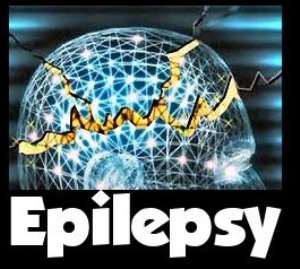
Millions of people worldwide suffer with epilepsy, a neurological condition marked by recurring seizures. Many people have a persistent burden from the illness that affects their everyday lives and general well-being. An important portion of epilepsy cases are caused by anomalies in brain development. It is essential to comprehend the connection between developmental defects and epilepsy in order to improve patient outcomes through early diagnosis and efficient treatment.
What Are Developmental Abnormalities?
The anatomical alterations that take place in the brain throughout its creation and growth are known as developmental abnormalities. Genetic mutations, prenatal environmental conditions, or difficulties during delivery can all cause these problems. Common forms include lissencephaly, schizencephaly, and cortical dysplasia; each has its own set of difficulties and signs..
• Cortical dysplasia: This disorder causes aberrant neuronal layering and arrangement in the cortex of the brain, which impairs intercellular communication.
• Schizencephaly: This condition, which is characterized by abnormal slits or clefts in the brain hemispheres, can result in motor dysfunction and severe developmental delays.
• Leissencephaly: This uncommon disorder causes incorrect neuron migration, resulting in a flat surface of the brain. It frequently causes significant intellectual disability and movement difficulties.
How Do These Abnormalities Lead to Epilepsy?
A sophisticated network of neurons that carry electrical impulses in a carefully controlled way is essential to the brain's regular functioning. This equilibrium is upset by developmental defects, which result in aberrant electrical activity that can cause seizures. The precise mechanism may change:
1. Aberrant Neuronal Circuits: Unusual arrangements of neurons can result in circuits that are aberrant, which can cause uncontrollable and spontaneous electrical discharges.
2. Excitatory-Inhibitory Imbalance: Deviations from normalcy may throw off the brain's delicate equilibrium between excitatory and inhibitory impulses, increasing the risk of hyperexcitability and seizures.
3. Structural Anomalies: When physical flaws such as smooth brain surfaces or clefts obstruct normal signal transmission, epileptic activity can occur in specific areas of the brain.
Genetic testing, clinical evaluation, and imaging methods are sometimes used to diagnose epilepsy linked to developmental abnormalities. Magnetic resonance imaging (MRI) is very helpful as it can detect structural problems that other diagnostic methods might overlook. When diagnosing epilepsy and determining abnormal brain electrical activity, electroencephalograms (EEGs) are a helpful diagnostic technique. Treatment plans frequently need to be comprehensive and include mostly of antiepileptic medicines, surgery, and various supplemental therapies including ketogenic diets. The lives of individuals impacted can be significantly improved by early intervention and a thorough, customized approach to treatment. We may strive toward a future in which efficient treatment and potential treatments for epilepsy are within grasp by comprehending the complexity of developmental anomalies and their effects on the condition.




 University degree not needed to create business; ideas needed – LEC Group
University degree not needed to create business; ideas needed – LEC Group
 Many walk with Sharaf Mahama in Tamale
Many walk with Sharaf Mahama in Tamale
 UGMC concludes first 6 kidney transplants
UGMC concludes first 6 kidney transplants
 Forestry Commission arrests 30 illegal miners, excavators shut down in forest re...
Forestry Commission arrests 30 illegal miners, excavators shut down in forest re...
 Use peaceful negotiations in pursuit of better working conditions – unionists to...
Use peaceful negotiations in pursuit of better working conditions – unionists to...
 Dampare not removed—Police
Dampare not removed—Police
 Ghana to roll out new standards-based curriculum next year
Ghana to roll out new standards-based curriculum next year
 High consumption of salt exposes many to hypertension — Physician Assistant
High consumption of salt exposes many to hypertension — Physician Assistant
 'Stop it’ – Actors Guild cautions Nigerians over rumours of Olu Jacobs’ death ev...
'Stop it’ – Actors Guild cautions Nigerians over rumours of Olu Jacobs’ death ev...
 Former opposition parties get 12 ministries in S.Africa's new govt
Former opposition parties get 12 ministries in S.Africa's new govt
